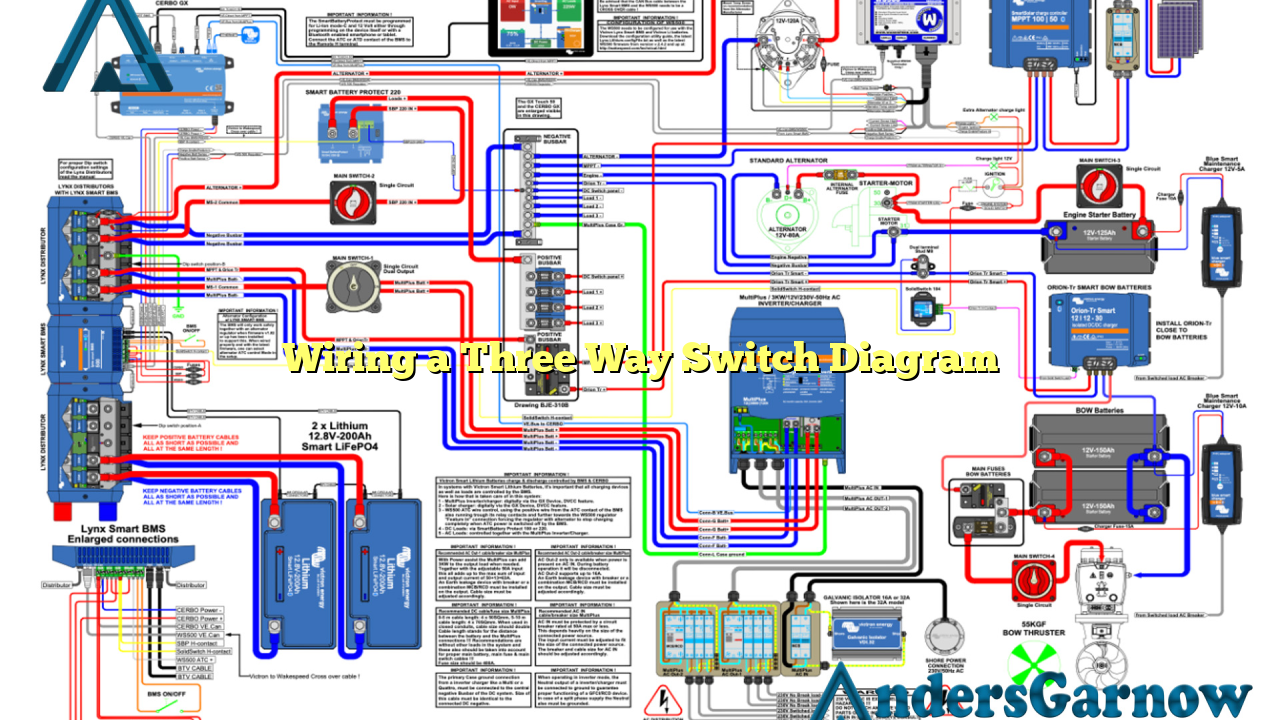Hello and welcome to our comprehensive guide on wiring a three-way switch diagram. In this article, we will walk you through the step-by-step process of installing and wiring a three-way switch in your electrical system. Whether you are a DIY enthusiast or a professional electrician, this guide will provide you with all the necessary information to successfully complete the task.
1. Understanding the Basics of a Three-Way Switch
Before we dive into the wiring process, let’s first understand the basics of a three-way switch. A three-way switch is commonly used to control a single light fixture from multiple locations. It allows you to turn the light on or off from two different switches, providing convenience and flexibility.
The three-way switch has three terminals: the common terminal (usually black or dark-colored) and two traveler terminals (usually brass or light-colored). The common terminal is connected to the power source, while the traveler terminals are connected to the other switches in the circuit.
Advantages:
- Allows control of a single light fixture from multiple locations
- Provides convenience and flexibility
Disadvantages:
- Requires additional wiring and switches
- Can be confusing for beginners
2. Gathering the Necessary Tools and Materials
Before you start the wiring process, make sure you have all the necessary tools and materials. Here is a list of items you will need:
| Tools | Materials |
|---|---|
| Screwdriver | Three-way switches |
| Wire stripper | Electrical wires |
| Pliers | Wire nuts |
| Utility knife | Electrical tape |
3. Planning the Wiring Layout
Before starting the wiring process, it is essential to plan the layout. Determine the locations of the switches and the light fixture. Measure the distance between the switches and the fixture to ensure you have enough wire length.
Draw a diagram of the circuit, indicating the power source, switches, and light fixture. This diagram will serve as your guide during the wiring process.
4. Turning Off the Power
Safety should always be a priority when working with electrical systems. Before you begin wiring, turn off the power to the circuit at the main breaker box. Use a voltage tester to ensure the power is off before proceeding.
5. Wiring the First Switch
The first switch is the one connected to the power source. Start by connecting the hot wire (usually black) to the common terminal of the switch. Connect the two traveler wires (usually red and white) to the traveler terminals. Use wire nuts to secure the connections.
6. Wiring the Second Switch
The second switch is connected to the light fixture. Connect the hot wire from the fixture to the common terminal of the second switch. Connect the two traveler wires to the traveler terminals. Again, secure the connections with wire nuts.
7. Wiring the Light Fixture
Finally, connect the hot wire from the second switch to the light fixture. Connect the neutral wire (usually white) from the fixture to the neutral wire in the electrical box. Use wire nuts to secure all the connections. Make sure to follow the manufacturer’s instructions for proper wiring.
8. Testing the Circuit
Once you have completed the wiring, turn the power back on and test the circuit. Flip the switches to ensure the light fixture turns on and off from both locations. If there are any issues, double-check the wiring connections and troubleshoot as necessary.
9. Alternative Wiring Methods
While the traditional three-way switch wiring method we discussed above is the most common, there are alternative methods available. One alternative is using a wireless three-way switch system that eliminates the need for running additional wires between the switches. Instead, the switches communicate wirelessly, providing a convenient and flexible solution.
10. Frequently Asked Questions (FAQ)
Q: Can I use a regular switch instead of a three-way switch?
A: No, a regular switch cannot achieve the same functionality as a three-way switch. A regular switch can only control a light fixture from a single location.
Q: How many switches can I connect to a three-way circuit?
A: You can connect as many switches as you need to a three-way circuit, as long as you follow the proper wiring method and ensure all the connections are secure.
In conclusion
Wiring a three-way switch diagram may seem complex at first, but with the right tools, materials, and knowledge, it can be a manageable task. Remember to prioritize safety, plan the wiring layout, and follow the step-by-step instructions. Whether you choose the traditional wiring method or explore alternative options, a successfully wired three-way switch will provide you with convenient control over your lighting system from multiple locations.

